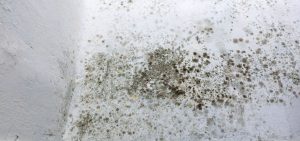Rising damp is a persistent issue that can plague older buildings, causing not only structural damage but also creating an unhealthy living environment. Understanding what rising damp is, how to detect it, and the available solutions is essential for property owners and managers. In this comprehensive guide, we’ll delve into the world of rising damp, exploring prevention methods, detection techniques, and effective solutions to keep your property dry and secure.
What is Rising Damp?
Rising damp is a phenomenon that occurs when groundwater rises through porous building materials such as bricks and mortar. This moisture carries with it salts and minerals, which can wreak havoc on the affected walls and plaster.
It typically manifests as damp patches on walls, often with a characteristic tidemark, crumbling plaster, and a musty smell that pervades the affected area. If left unaddressed, it can lead to more serious structural problems, making it crucial to identify and tackle rising damp at the earliest signs.
Prevention is Key
Preventing rising damp is far easier and more cost-effective than dealing with the consequences. Here are some proactive prevention strategies to consider:
Damp-Proof Course (DPC):
A Damp-Proof Course is a physical barrier typically made of materials like slate or plastic, installed in walls to prevent moisture from rising. In older properties, it’s essential to check if a DPC exists and is functioning correctly. If not, consider investing in professional installation.
Regular Maintenance:
Keeping your property well-maintained is essential. Address leaks and damaged gutters promptly, and ensure that external ground levels are lower than internal floor levels to prevent water from seeping into the walls.
Ventilation:
Proper ventilation is crucial to allow moisture to escape from the property. Ensure that rooms are adequately ventilated, especially in high-moisture areas like bathrooms and kitchens. Consider installing extractor fans if necessary.
Detecting Rising Damp
Detecting rising damp early is crucial for preventing further damage. Look out for these telltale signs:
Damp Patches:
The most apparent sign is damp or discolored patches on walls, often accompanied by flaking or crumbling plaster. These patches may have a tidemark, showing the highest point to which the damp has risen.
Musty Odour:
A persistent musty or moldy smell is a common indicator of rising damp. If you notice this odour in your property, investigate the source promptly.
Salt Deposits:
As the moisture evaporates from the affected area, it leaves behind salt deposits, known as efflorescence. These white, powdery deposits may appear on affected walls.
Decayed Skirting Boards:
Rising damp can affect skirting boards, causing them to rot or deteriorate over time. Check skirting boards for signs of damage or decay.
Effective Solutions
If you suspect or confirm the presence of rising damp in your property, it’s essential to take action promptly. Here are some effective solutions:
Damp-Proofing:
Installing or repairing a damp-proof course is often necessary to prevent rising damp. This involves creating a barrier within the walls that prevents moisture from ascending.
Replastering:
Damaged plaster should be removed and replaced with damp-proof plaster to prevent future issues. Replastering is often necessary after damp-proofing to restore the affected areas.
Dehumidifiers:
Using dehumidifiers can help reduce moisture levels in the affected area. While this won’t solve the underlying issue, it can aid in maintaining a drier indoor environment.
Drainage Improvements:
Addressing drainage issues around your property is essential. Proper drainage helps divert water away from the foundation, reducing the risk of rising damp. This may involve installing or repairing drainage systems and adjusting ground levels.
Professional Help:
Consulting with damp-proofing specialists like Paramount Pointing Ltd can provide expert guidance and effective solutions for tackling rising damp. Professionals can assess the extent of the issue and recommend the most suitable damp-proofing methods for your property.
Conclusion:
In conclusion, rising damp is a challenging issue that demands attention and action. Prevention, early detection, and effective solutions are key to maintaining a dry and secure living space in older properties. Don’t ignore the signs; instead, take proactive steps to safeguard your property against the damaging effects of rising damp. Remember, a dry home is a healthy home.
Ready to safeguard your property from rising damp and moisture issues? Contact Paramount Pointing today for expert damp proofing and protective coatings. Ensure a dry and secure living space for years to come. Your property deserves the best – trust the specialists!


